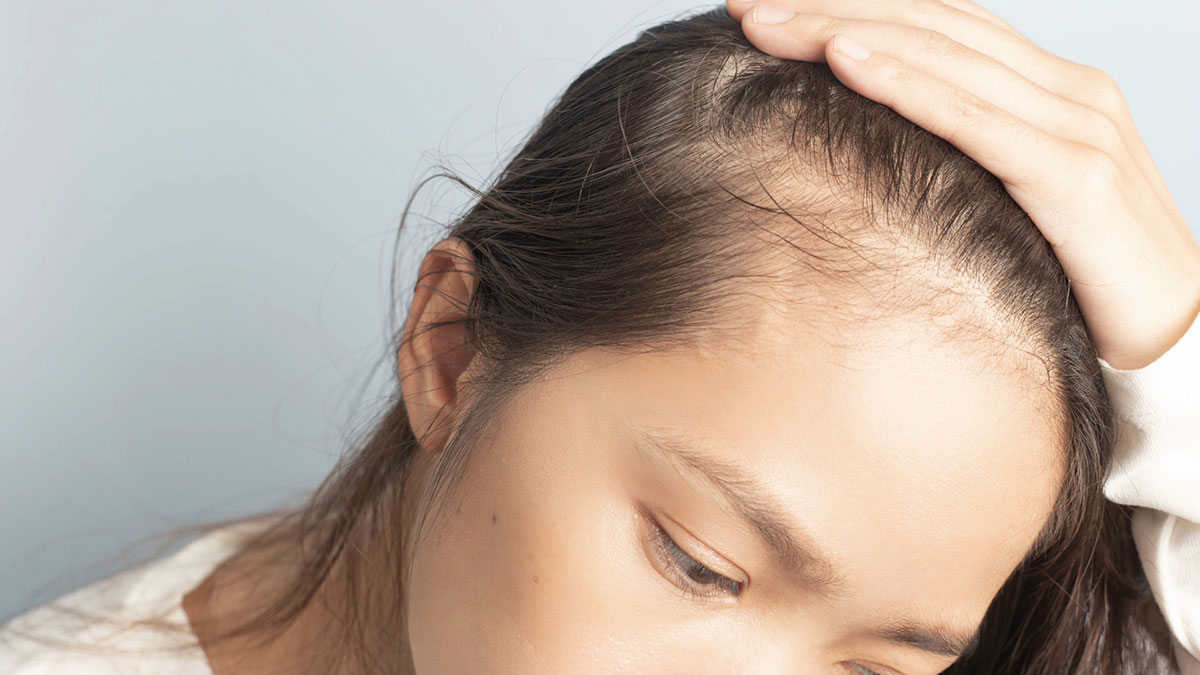Thinning Hair

Example of Thinning Hair candidate shown above.
Thinning Hair
Treatments for improving hair density
Recommended Treatments
PRP, platelet rich plasma is a treatment that uses a patient’s own blood to stimulate hair growth. It can help with hair loss caused by a variety of factors, including stress, hormonal changes, and hereditary baldness.
Frequently Asked Questions
What is PRP therapy for hair loss?
PRP (Platelet-Rich Plasma) therapy is a non-surgical treatment that uses your own blood’s platelets to stimulate hair growth. A small amount of blood is drawn, processed to concentrate the platelets, and then injected into the scalp to promote hair follicle regeneration and thickness.
How does PRP work for hair restoration?
PRP contains growth factors that help repair and rejuvenate hair follicles. When injected into the scalp, PRP:
- Increases blood flow to the hair follicles
- Stimulates collagen and elastin production
- Extends the hair growth cycle, reducing hair shedding
- Strengthens existing hair and promotes regrowth
Who is a good candidate for PRP hair treatment?
PRP is most effective for people experiencing:
- Early-stage thinning hair or mild to moderate hair loss
- Androgenic alopecia (genetic hair loss)
- Hair shedding from stress, hormonal changes, or medical conditions
PRP may not be as effective for individuals with complete baldness or scarring alopecia.
How many PRP sessions are needed for hair growth?
Most patients need 3 to 4 initial treatments, spaced about 4 to 6 weeks apart. After that, maintenance treatments every 6 to 12 months help sustain results.
How soon can I see results from PRP hair treatments?
Hair shedding typically decreases within the first few weeks. Noticeable hair thickness and regrowth begin around 3 to 6 months, with continued improvement over time.
Is PRP treatment painful?
The procedure involves small injections into the scalp, which may cause mild discomfort. A numbing cream or local anesthetic can be used to minimize pain. Most patients find it very tolerable.
Are there any side effects of PRP for hair loss?
Since PRP comes from your own blood, the treatment is very safe with minimal risks. Some temporary side effects include:
- Mild redness or swelling at the injection sites
- Slight tenderness or soreness in the scalp
- Minimal risk of infection or bruising
Can PRP be combined with other hair loss treatments?
Yes! PRP works well with:
- Topical treatments like minoxidil (Rogaine)
- Oral medications such as finasteride (Propecia)
- Low-level laser therapy (LLLT) for hair growth
- Hair transplants to improve healing and results
How long do PRP results last?
PRP can help maintain and improve hair growth for 12 to 18 months, but ongoing maintenance treatments are recommended to sustain results.
How can I book a consultation for PRP hair treatment?
If you’re experiencing thinning hair and want to explore PRP therapy, schedule a consultation with a specialist to discuss your options. Contact Deborah for a Free Consultation.
